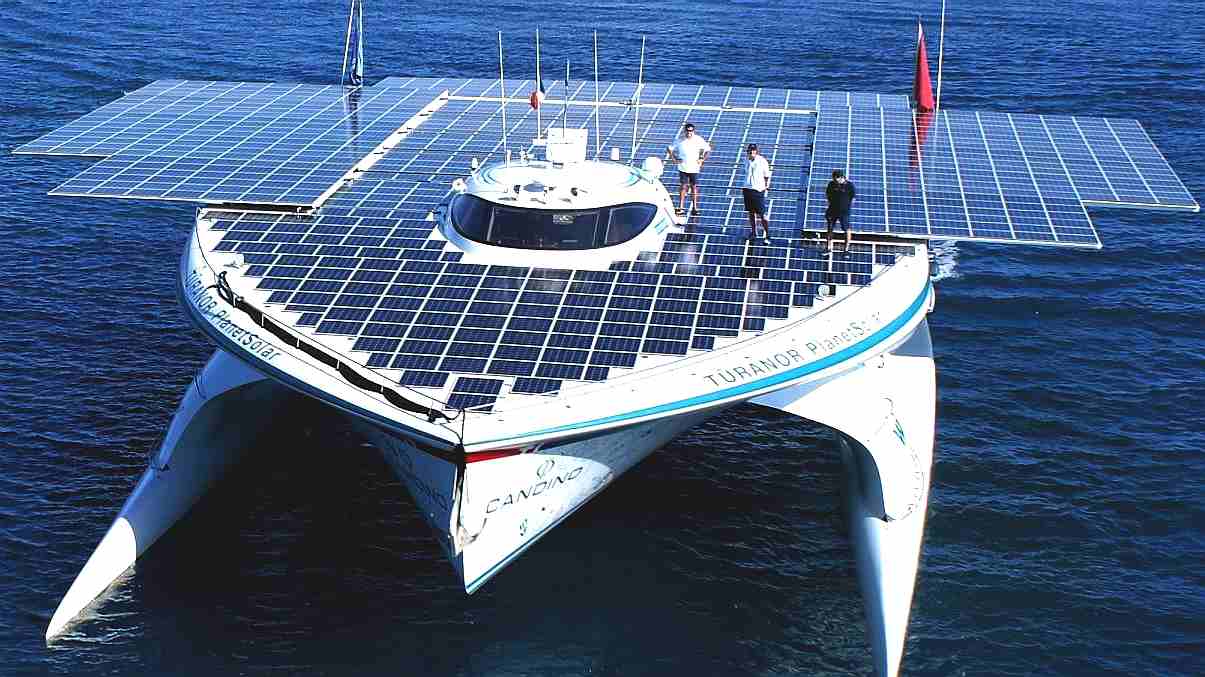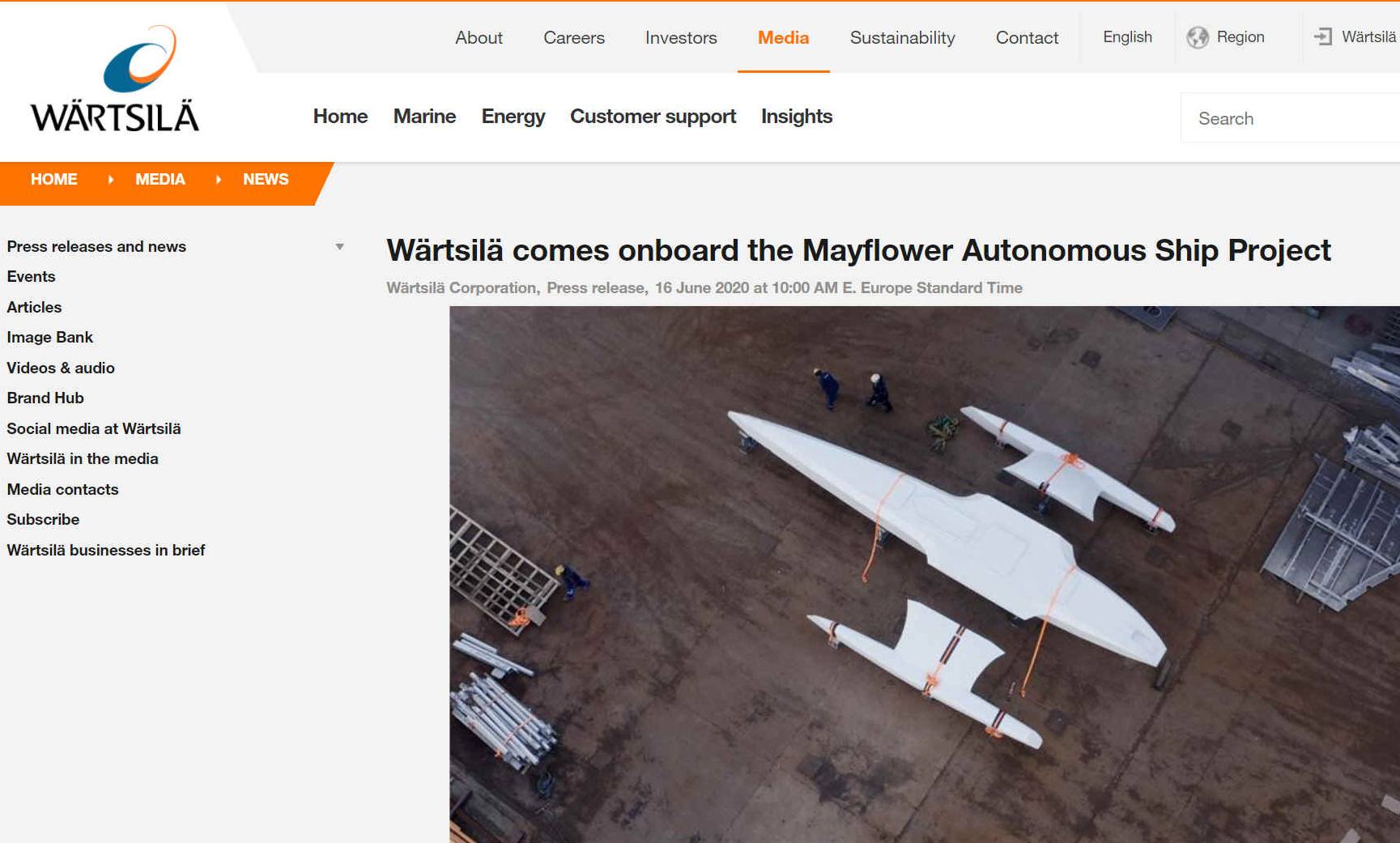
WARTSILA
- Is a Mayflower MAS400 partner. Wärtsilä claim to lead the transition towards a 100% renewable energy
future, by helping their customers unlock the value of the energy transition by optimising their energy systems and future-proofing their assets.
Wärtsilä's offering comprises flexible power plants, energy management systems, and storage, as well as lifecycle services that ensure increased efficiency and guaranteed performance. Wärtsilä has delivered 72 GW of power plant capacity in 180 countries around the world.
According to their website, Wärtsilä is a global leader in smart technologies and complete lifecycle solutions for the marine and energy markets. By emphasising sustainable innovation, total efficiency and data analytics, Wärtsilä maximises the environmental and economic performance of the vessels and power plants of its customers. In 2019, Wärtsilä’s net sales totalled EUR 5.2 billion with approximately 19,000 employees. The company has operations in over 200 locations in more than 80 countries around the world. Wärtsilä is listed on Nasdaq Helsinki.
MAS
400 - MAYFLOWER PROJECT
Retracing the voyage of its famous 17th century namesake vessel, the Mayflower Autonomous ship is set to become one of the world’s first fully autonomous, unmanned vessels to cross the Atlantic. Led by marine research organisation, ProMare, the project is developing autonomous systems that can later be deployed commercially, offering a window into the future of shipping and marine research.
Wärtsilä has joined a global consortium of technology partners that includes IBM. IBM is providing the AI, cloud and edge computing, and power systems behind the Mayflower’s AI Captain that will enable the vessel to sense, think and make decisions at sea.
The Wärtsilä RS24 system is a ground-breaking high-speed, high-resolution FMCW K-Band radar (24GHz) designed to provide high levels of situational awareness – especially in densely populated marine environments. The RS24 radar system will work in tandem with the Mayflower’s onboard cameras, AIS, and navigational systems as a core part of the AI Captain. The AI Captain constantly evaluates the Mayflower’s environment and long-term goals, and modifies the ship’s course in order to avoid debris and storms which could threaten the ship at sea.
The RS24 is already established as one of the primary sensors onboard the Wärtsilä IntelliTug - the first commercial Maritime Autonomous Surface Ship, which underwent successful trials in Port of Singapore waters last year.
The Wärtsilä RS24 has a five times higher resolution than existing marine S and X-Band radars with spin cycles of 60 rpm. This enables resolution separation of small crafts in crowded waters, especially in close proximity to the vessel, and will allow the Mayflower to navigate safely in complex situations. By identifying potential hazards, and through fusing data with that from the video recognition and AIS, the Wärtsilä system helps produce a high-fidelity map of the operating area.
“Our team has followed the development of technologies applicable to ship autonomy, and when selecting systems for the Mayflower project, we quickly recognised that the Wärtsilä RS24 was the perfect radar solution. Having Wärtsilä as a partner really helps the project; they understand the marine environment and how the various instruments should be designed, deployed, operated and maintained, plus they have tremendous experience in integrating systems, says Brett Phaneuf, Co-Founder of the Mayflower Autonomous Ship Project.
“We are pleased to provide our latest, high-resolution radar technology, the RS24, as an integral component of the Mayflower
Autonomous Ship project. This will form the primary instrument for acquiring and tracking targets, and maintaining situational awareness at a scale that allows for early path planning and hazard reduction. This is a unique and highly significant project, and Wärtsilä is honoured to participate in this partnership,” says Dr Sasha Heriot, Business Development Manager, Wärtsilä Voyage.
Wärtsilä’s experience in integrating complex systems, and its know-how in manned and unmanned marine operations, were cited as being of huge importance to the project. The company’s Smart Marine approach emphasises the value in collaborating with qualified partners to achieve greater efficiencies throughout the maritime ecosystem. It is anticipated that when completed, the Mayflower voyage will represent a major step forward in bringing autonomous shipping to realisation.
The Mayflower will support the development of a flexible and cost-effective platform for oceanographic research. It will also act as a testbed for new navigation software, renewable energy, and propulsion systems for marine vessels.
At 15m in length and weighing a mere 5 tons, the Mayflower is small and fast. Performing nimble manoeuvres to avoid other ships and marine debris, the Mayflower will benefit from a highly responsive short-range radar to help detect and avoid potentially show-stopping objects in the water. Specifically designed to look for potential hazards at close range, up to 1000m, the Wärtsilä RS24 radar will play a fundamental part in securing safe passage as she traverses oceans.
The new-generation Mayflower is set to take to water for sea trials in the summer of 2020.
Wärtsilä Voyage radically transforms the way vessels perform their voyages by leveraging the latest digital technologies to deliver a step-change in safety, efficiency, reliability and emissions.
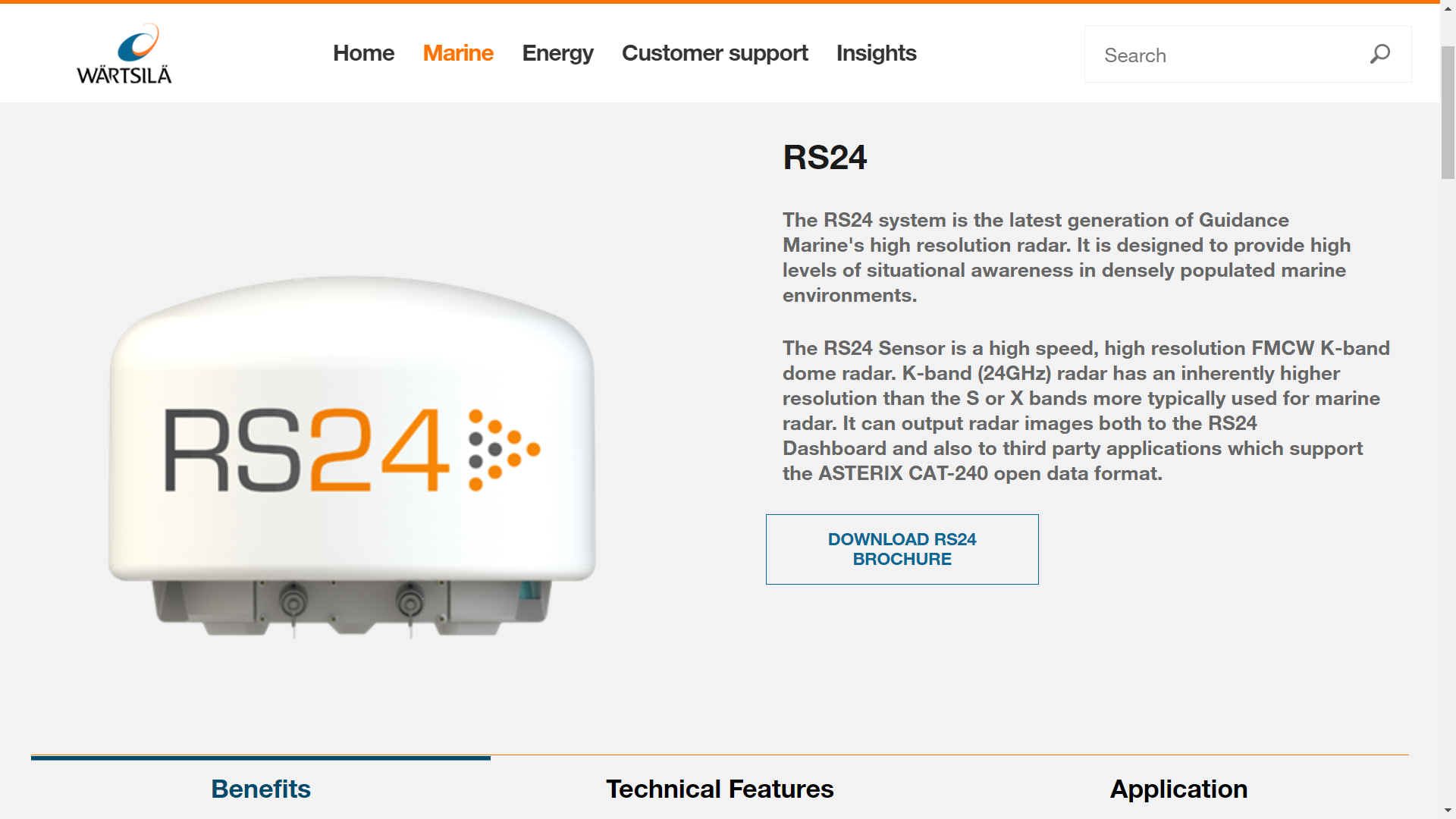
EU
GREEN DEAL - 1 SEPTEMBER 2020
The shipping industry is a major source of greenhouse gas emissions in Europe. Now, the EU is taking on the challenge of marine emissions by including them in the Green Deal. How will the agreement work, what challenges will it face and what can individual players do to minimise their impact in the meantime?
A recent report from Transport & Environment, Europe’s leading clean transport campaign group, found that ships sailing to and from Europe emitted more than 139 million tonnes of CO2 last year. If shipping were a country, it would be the EU's 8th largest emitter after the Netherlands. Most worrying is the fact that shipping is the only sector with no binding measures to reduce its carbon emissions and still does not pay for its carbon pollution.
“At the moment, we don’t have EU regulations to limit shipping emissions. What we have are IMO initiatives and the EU MRV (Monitoring, Reporting and Verification), which simply records shipping emissions but doesn’t limit them,” says Lucy Gilliam, aviation and shipping campaigner at Transport & Environment.
The EU Green Deal suggests that shipping emissions will be included, says Diane Gilpin, founder and CEO of Smart Green Shipping, but this will come with serious challenges because it is a complex task to monitor, measure, and apportion emissions from international shipping.
“Who 'owns' what proportion of the emissions of a ship calling at lots of different ports in different countries to conduct its trade? That complexity means the shipping industry's preferred approach is to develop an internationally agreed approach. But it's a huge challenge to secure agreement across the 173 member states that make up the UN mandated
IMO. The EU is running out of patience and is, in the Green Deal, proposing to act independently of IMO to address emissions reductions from global shipping,” Gilpin explains.
‘No longer acceptable’ to not address emissions
Gilliam also shows cautious optimism that we could relatively soon see real change in terms of finally regulating this sector and making it greener in general.
“The European Parliament has also talked about creating a mandatory operational shipping CO2 standard and zero emission berth standard under the MRV regulations. This is taking the monitoring, reporting, and verification regulations, and using that information to not only see what the emissions are, but also to create a standard where those emissions over time would decline and there would be a charge for those emissions through extension of the EU ETS and then revenue could be reinvested in greening EU economy and infrastructure for ports and ships and in fuel subsidies for ships, etc.,” Gilliam says.
Although the MRV has no limiting function, the data collected would be used for its extension to create a maritime strategy and roll out battery, electric, green hydrogen, and ammonia for shipping, and to help support innovations for efficiency such as wind propulsion, which will ultimately decarbonise the sector. The proposals have been made, but to result in concrete regulation and implementation, the process, according to Gilliam, could take at least 1.5 years – or even longer. One of the obstacles could be certain parts of the shipping and fossil fuel industry, some of which are, understandably, opposed to these types of ideas because that would put up the cost of their operations and, subsequently, their products.
Another potential obstacle is that imposing a unilateral emissions cost on ships calling at EU ports could result in pattern shifts, i.e. ships avoiding calling at ports with emissions costs and opting to deliver cargoes elsewhere so the final leg of delivery will be by land transport, which is inherently more polluting. This has, up until now, stayed the EU's hand, “but with pressure increasing on the maritime sector and IMO to play its part in reducing global GHG emissions rapidly I would expect to see the EU play hardball this time,” Gilpin says.
The EU is especially emboldened because climate action is becoming a much more pressing issue with civil society on the streets and children striking, Gilliam states. It’s now no longer acceptable for any industry to not be playing its part, and EC leaders are really pushing for making the shipping industry to do just that. That is not to say that nothing at all is being done, but according to Gilpin, emission reductions efforts made by the shipping industry are weak and reflect efficiency improvements that would have been implemented anyway.
“That said, I have not met a ship owner who does not want to reduce emissions — they understand the challenge and the urgency. But without clear and ambitious targets for emissions reduction there is no level playing field, so business is reluctant to act for fear of being disadvantaged. It is why policy is so important to us all,” Gilpin explains.
Taking steps toward the future
While we wait for that to happen, improving vessels’ efficiency, defining smart operational goals and using new technologies is key.
“You can have an efficient ship, but the way you operate can mean that it's used very inefficiently. This comes down to the speed of operations, how much time you have to sit idle waiting for ports and whether you've got any other technologies on board that can lead to greater efficiency. Then there's also efficiency in operations. One way to improve the efficiency would be to regulate the speed of operations, without using any new technology. Speaking of new technologies, there are things like wind propulsion and air lubrication of the hull. And these technologies are already available on the market,” Gilliam outlines.
However, these novel technologies are not widely used. There are still those in the shipping industry that don’t see this as something necessary because the cost of emissions is still not high enough for them to invest in these new technologies. So, what can maritime countries and individual ports do to voluntarily lower their emissions in the meantime? First, they can act in their own right to declare they want zero-emission imports and demand a zero-emission berth standard, meaning ships would need to plug in to shore power, burn zero emission fuels like hydrogen or have hybrid batteries.
“This could be a little challenging because ports are often in competition with each other but, nonetheless, some ports and nations have taken it up. In Norway, for example, there’s the clean fjords initiative, the idea that ships that go into fjords need to be zero emission. We’re seeing ports like Hamburg installing shore power so that cruise ships have to plug in when they visit,” Gilliam says.
Secondly, maritime countries can also change the tax on electricity supply to vessels in ports. Currently, electricity to ports and vessels is taxed. However, on a temporary basis, a country could write to the EC and get permission for a waiver for the tax on electricity so that it becomes cheaper for a ship to use shore power, because at the moment it's cheaper for vessels to burn fossil fuels on a ship than to plug in in most ports.
Thirdly, ports and countries can invest in infrastructure, such as building up capacity for electric charging stations or
hydrogen infrastructure.
“There are quite a lot of different pots of EU money for innovation and building new ships. As an example, the EU Innovation Fund is a huge fund of money that supports transition and comes from the emission trading scheme revenue and shipping is eligible to apply. So, if you've got an innovative ship that you want to build, you could apply and get a subsidy of 60% for your vessel. The innovation fund is a subsidy for capital costs, but also for operational costs. There are also things like Interreg projects (EU regional development funds) and there's a couple of shipping projects that are already receiving funding, like H2SHIPS, which is a hydrogen ships project,” Gilliam explains.
In fact, there are countless other measures out there. Gilpin emphasises that the key is to make it commercially irresistible for shipowners to invest in emissions reductions solutions. She suggests that short-term emissions reductions targets would be a great way to deliver that.
“Invest in innovation, support emerging players in the maritime sector to overcome initial innovation costs and rapidly bring solutions to
market… There are hundreds of solutions that can bring down emissions immediately – the industry is not yet fully incentivised to adopt them,” Gilpin concludes.
By Maria Stambler
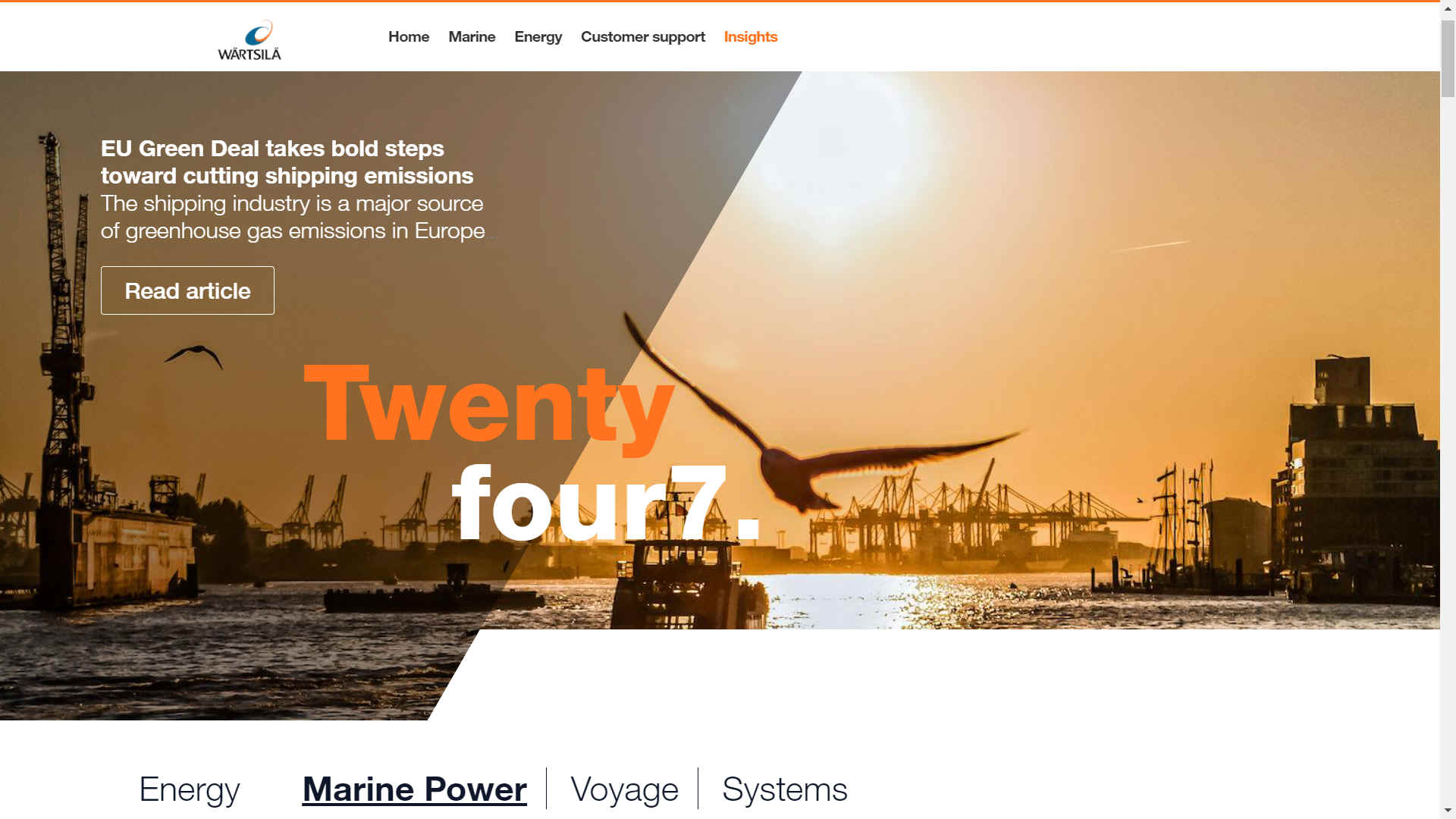
CONTACTS
Mayflower
media contact:
Ms Marit Holmlund-Sund
General Manager, Positioning, Marine Business Marketing
Wärtsilä Corporation
Tel: +358 10 709 1439
marit.holmlund-sund@wartsila.com
Corporate media contacts:
Mr Atte Palomäki
Executive Vice President
Communications, Branding & Marketing
Location: Helsinki, Finland
Tel. +358 10 709 5599
media@wartsila.com
Ms Sari Luhanka
Manager, Global Media Relations
Communications & Branding
Location: Helsinki, Finland
Tel. +358 10 709 5774
sari.luhanka@wartsila.com
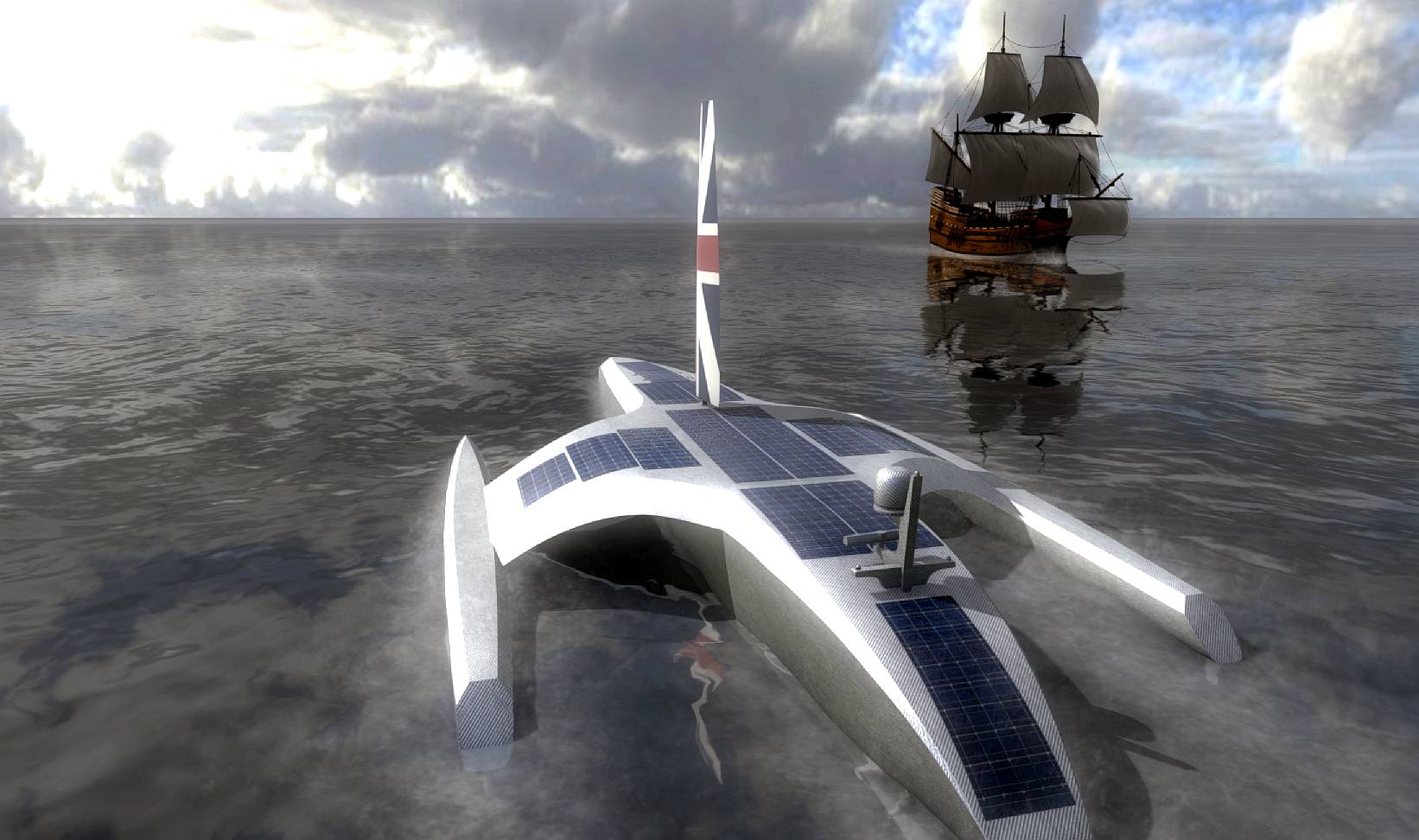
LINKS
& REFERENCE
https://www.wartsila.com/
https://mas400.com/
https://newsroom.ibm.com/then-and-now
